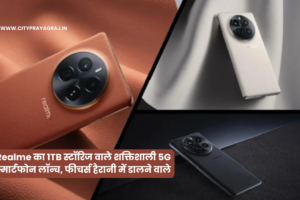Programmatic SEO: The evolution of SEO from a search engine algorithm-driven strategy to a more meaningful user-intent-driven strategy is evident today. For businesses and companies, SEO is now a trusted source of their website traffic and brand awareness.

Wondering how TripAdvisor or Amazon have pages for every search query, regardless of what you’re looking for in their industry?
The answer is programmatic SEO. It is an effective way to boost organic traffic by entertaining hundreds and thousands of search queries with engaging, entertaining and educational content. the best bit? It is all data-driven and automated.
Table of Contents
What is Programmatic SEO?
Programmatic SEO uses developer code to automatically create massive landing pages using artificial intelligence techniques.
These landing pages are designed extensively to target long tail keywords. This way, businesses and brands can take advantage of both high volume and low volume search queries with transactional intent and come out on top in SERPs.
Programmatic SEO is definitely a topic of discussion in the SEO industry at the moment and is most commonly seen in travel, hospitality, eCommerce, real estate, etc.
Are you looking for a result driven SEO Agency in India?
Get Best SEO and SMM Services by one of the best and Most Reputated Digital Marketing Agency in India (Abloftsolutions.com).
How to do Programmatic SEO
A good programmatic strategy largely rests around quality keyword research for SEO. Let’s see how to do it:
1. Tons of Keyword Research
The goal is to filter relevant traffic to your website by targeting as many keywords as possible based on different search objectives of the audience.
Find top positions
First and foremost, you need to look for key words. Key words are defined as broad categories of high-volume keywords for which a business decides to rank on search engines.
For example, for a travel website, the title words may be ‘hotel’ or ‘itinerary’. Similarly, for an e-commerce website, the title words may be ‘Gadgets’, ‘Electronics’, ‘Deals’ etc. It’s also important to find out their search volume using a tool like Google Trends.
Identify modifier
Once you have your key conditions, you need to look for the appropriate modifiers. So, what are modifiers? Well, these are add-on words that are usually paired with the top words in most searches. For example, ‘3-star hotel’, ‘gadget for men’, ‘Chinese restaurant’, etc., are key words with modifiers.
Additionally, modifiers are divided into two categories:
- Primary modifiers that create a new keyword category
- Secondary modifiers that describe only one key word.
local modifier
Using a local modifier that consists of a key phrase and a space is ideal if you want to capture local leads. For example, ‘shopping malls near me’ or ‘hotels in Mumbai’ are keywords that contain local modifiers.
At the end of the day, it’s important to know which modifiers rank better locally and focus on those in your programmatic content.
Compile your keywords into a list
Remember, a good programmatic strategy lists a large number of keywords and modifiers. Usually, at least 2000 keywords is a good way to start.
If you have a large number of keywords, such as 100,000+, then using a coding language like Python is useful for creating an organized list. Don’t forget to compile the keywords in the spreadsheet as well.
2. Large-scale Competitive Research
Now that you have a powerful list of keywords, it’s time to find out what your massive competitors are doing. Anyone who is competing extensively for your keywords and ranking high is your competitor.
to do this:
- Analyse the top results on Google for your chosen keywords
- Find out the number of keywords your competitors rank for using a proper tool
- Using a tool like SEMRush or Ahrefs, you should also examine the backlinks and how they are crafting their title tags.
3. Massive Landing Pages
After completing your keyword research and competition analysis, you can move on to the next part of your programmatic SEO strategy: building landing pages at scale. Creating thousands of unique pages in no time is the hallmark of programmatic SEO. But remember: having 10,000 keywords doesn’t mean you have to create 10,000 pages.
The goal is to discover the exact keyword search intent of your target audience and to build content around that. Look for the ‘Related Search’ field at the bottom of the Google search results page for a certain phrase. This will provide you with a large number of outstanding intent-based keywords to create relevant landing pages at scale.
Also Read:
So, how to do this exactly? You can follow the lead of brands that implement programmatic SEO expertly, such as community forums, marketplaces, e-commerce, location-based travel pages, and more. These businesses produce content rapidly through template formats such as:
Structured product pages with similar design and layout
- Q&A Forum
- User Reviews
- listicles
- location-based content
4. Doorway Pages
Doorway pages should be avoided at all costs. These are websites or pages designed with a single goal in mind: to score high for certain search keywords. Ultimately, these sites serve as ‘gates’ to the same beneficial content that a user wants.
This type of link-building is not considered ‘helpful’, and search engines like Google love it. A gateway page is a website that, rather than answering a search query, provides a list of additional resources that visitors can find answers to.
5. Massive Interlinks
Finally, it’s time to build your links in a big way. Doing so often depends on what kind of niche you are in. Some useful strategies are:
- Viral Content: Find out what kind of content your audience likes to read and share. This leads to a lot of organic backlink growth.
- Ego-bait: This aggregator works well for brands. You can feature and recommend brands and businesses in your content or give them an embeddable badge on their website, such as ‘TripAdvisor-Recommended’.
- Industry insights: If you regularly churn out proprietary data and insights, you can garner a lot of PR and news media attention.
- Commissioned Surveys: Reach your audience to survey trends and opinions and convert them into marketable insights that can be picked up by journalists and the media.
Programmatic SEO Challenges and How to Fix Them
Like any other SEO strategy, programmatic SEO also has its fair share of challenges.
1. Crawability
The most pressing issue SEO experts face when applying a programmatic approach is getting Google bots to find and crawl thousands of their sites. To do this, it is important to classify, create and submit XML sitemaps and establish strong internal linking patterns.
2. Duplicate Content
Duplicate content has a negative impact on your page ranking. It is basically any type of content that appears multiple times on your website.
You can overcome this problem by using the canonical URL and changing the title tag. Resolving structural defects and, eventually, dismantling the material or modifying the redirect are some other options.
3. Thin Materials
Having sparse text on one of your programmatic landing pages can cause Google to treat it as thin content. This can adversely affect your SERPs. A good way to solve this is to add descriptive text to pages with no images or visual data representation.
4. Indexing and Crawling Budget
It’s often hard to estimate the number of links Google will easily crawl before your indexing slows down. Therefore, you must first list and index your most important pages.
Since these pages often have better content quality and boost user metrics, Google evaluates your page better from the start. This lets it maintain a good indexing speed and high rankings.
Benefits of Implementing Programmatic SEO

Better for content scalability
For businesses that have a vast array of search queries, manual content creation for thousands and millions of web pages can be painstakingly slow and costly. By using automation, brands can increase their content production at almost 10X the speed. Each landing page is tailored to specific user needs, thus increasing engagement at a rapid rate.
Better to reach
Did you know that over 500 billion never-before-seen searches are performed on Google every day? With a smart programmatic strategy, brands can create thousands of pages that cover a growing number of searches and keywords in as efficient a way as possible. This way, they can rank higher in more searches and are more likely to get the desired clicks.
Fast-track results
Since the speed at which programmatic content can be delivered is high, brands tend to experience improvements in their search engine rankings, more traffic, and quicker results in lead conversions.
Increases Backlinks
As you continue to emphasize SEO extensively through a programmatic strategy, you get to increase your backlinks dramatically. This is done by matching long-tail keywords with tailor-made content.
Distinctive features of programmatic content
Includes focus on long tail keywords
Rather than narrowing the scope of SEO by focusing only on high-volume keywords, programmatic content typically revolves around low-search volume long-tail keywords. But given thousands of pages of programmatic content, the total search volume adds up to a whopping number.
Can easily beat the competition
With this long-tail keyword approach, programmatic SEO faces slight competition. By creating more specialized programmatic content pages in bulk, it can easily beat the competition.
Good User Experience on Official Content
Naturally, with such a high quantity of content being produced, it is not possible to go for official content quality. Instead, programmatic content banks on its usefulness for specific audience queries and is more tailored for lead conversion.
Last word
To compete with high-ranking businesses, which have one page for almost every search query, brands must switch to programmatic SEO. It is a great way to increase visibility and traffic by automating mass content production.
Most importantly, a good programmatic strategy is based on search intent and transaction intent keywords, thus making any massive amount of content highly relevant and searchable. Before you begin, keep two things in mind:
- Spend ample time planning, testing, and optimizing your massive SEO assets before they go live
- Update, maintain and optimize your programmatic SEO and fix any errors regularly
Also Read:



